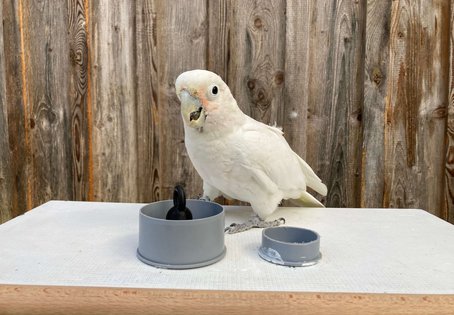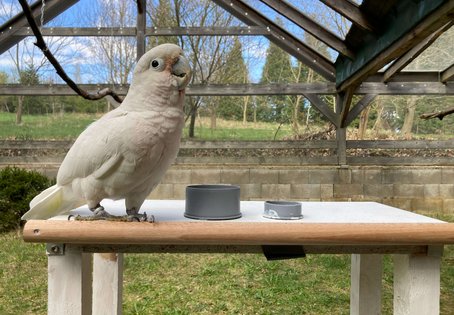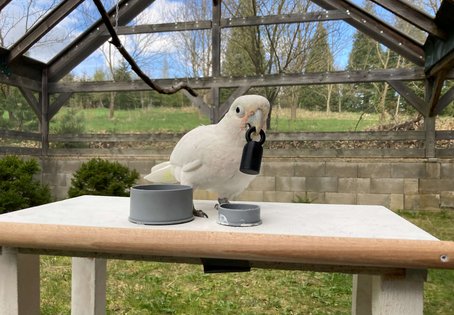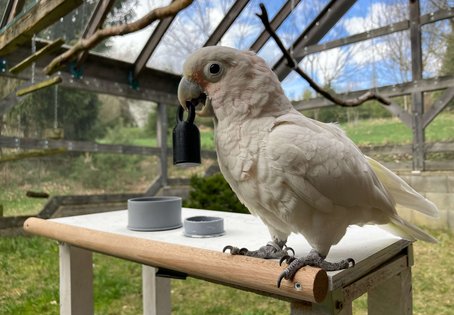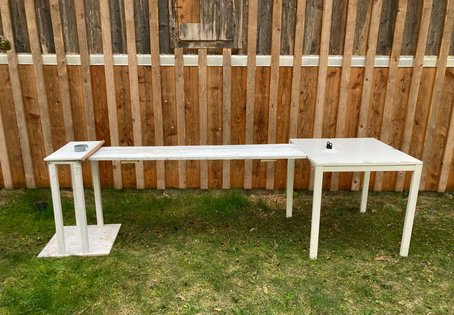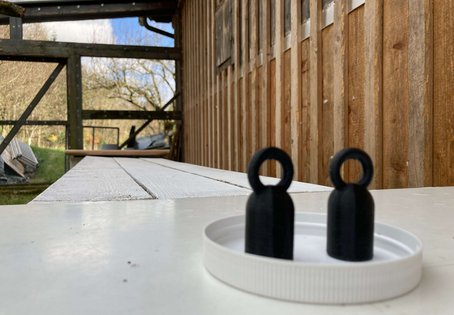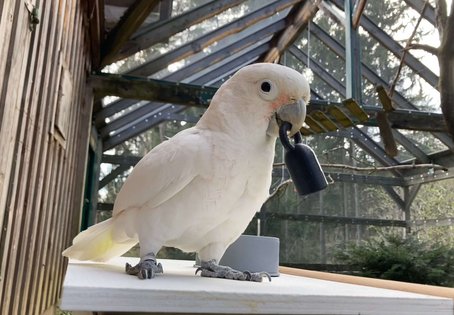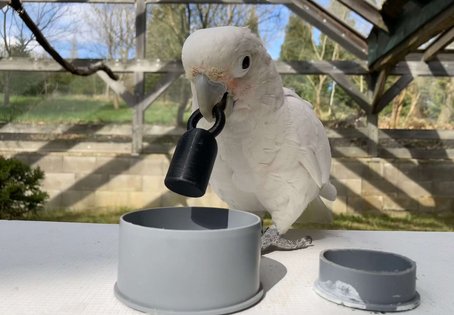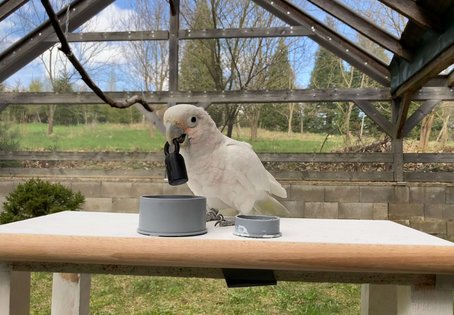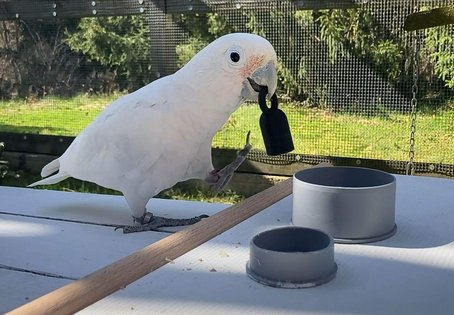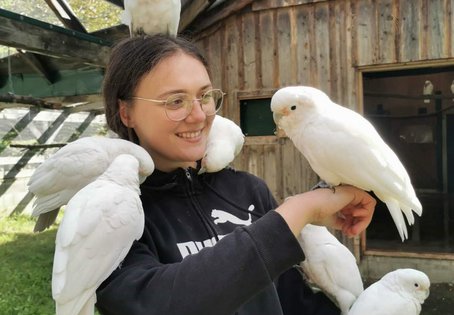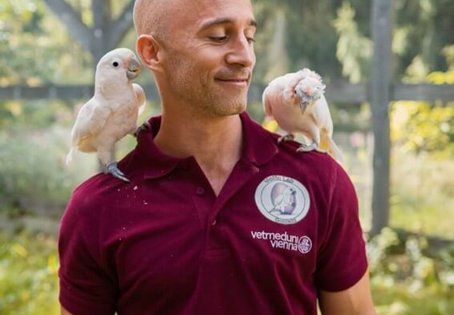- Home /
- University /
- Infoservice /
- Press Releases /
- Goffin's cockatoos show their preference for lifting and carrying weights in object transport tasks
Research
Goffin's cockatoos show their preference for lifting and carrying weights in object transport tasks
New study builds on previous findings that Goffin’s cockatoos outperform chimpanzees and capuchin monkeys in weight sensitivity
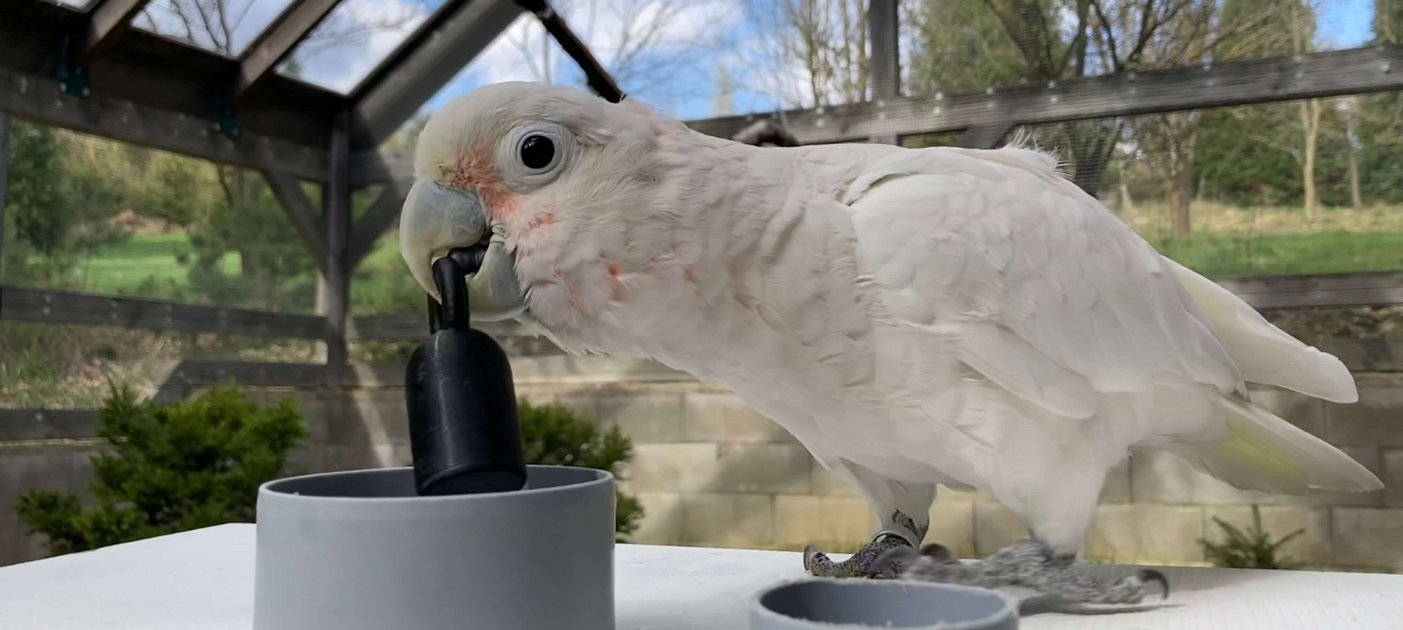
In a new study, researchers have observed that Goffin’s cockatoos selectively choose lighter objects over heavier ones when transporting visually identical objects with different weights, offering new insights into their decision-making strategies. Conducted by researchers at the University of Veterinary Medicine Vienna and the University of Oxford, the study reveals that these birds favor lighter objects in a way that reflects a refined energy-saving strategy.
The study builds on previous findings that Goffin’s cockatoos outperform primates such as chimpanzees and capuchin monkeys in weight discrimination tasks. Researchers suspected that the cockatoos’ ability to fly might contribute to their sensitivity to weight, as transporting a heavy object in flight demands considerable energy management.
In the experiments, the cockatoos were presented with two visually identical kettlebell- and dumbbell-shaped objects that differed only in weight. Each trial required the birds to transport one of the objects over a short distance to receive a reward. The setup included two conditions: a “walking condition,” in which a bridge connected the platforms, and a “flying condition,” where no bridge was available, requiring the birds to fly to deliver their chosen object. Importantly, each object yielded the same reward, ensuring that their preferences reflected weight considerations alone. Even with a subtle 30% weight difference, most cockatoos quickly developed a preference for the lighter option. Celestine Adelmant, co-first author and researcher at the University of Oxford, recalls the strength of these preferences in certain birds: “Sometimes the birds were so adamant about choosing the lighter object that they would throw the heavy object across the table before transporting the light object for the reward!”
In a second phase of the study, the birds encountered a choice between two dumbbell-shaped objects with equal overall weight but differing balance, where one object had an uneven weight distribution. Despite expectations, the cockatoos showed no significant preference between balanced and unbalanced options, suggesting that for their transport tasks, weight rather than balance is the primary factor in their decisions. “Whereas the weight of objects might be used to determine the nutritional content of nuts and seeds in natural populations, object imbalance has little nutritional relevance, so birds may not have evolved mechanisms to detect or counteract this cue”, says Adelmant.
During these trials, the cockatoos often exhibited “switching” behavior, picking up one object before setting it down and returning to the other, back and forth, before making a final choice. Antonio Osuna-Mascaró, co-first author from the Messerli Research Institute, interprets this as a sign of their decision-making process: “When cockatoos switch between objects, it may indicate uncertainty - a behavior we’ve noted in past studies. This switching could reflect metacognitive awareness, suggesting that the birds are exploring their own knowledge to evaluate both options.”
Contrary to expectations, the cockatoos did not display an increased preference for lighter objects when flying (a higher-energy activity) compared to walking. The researchers suggest this may be due to a trade-off between the physical effort of carrying heavier objects and the cognitive load of making an informed decision. “These little rascals love to do things fast. The interesting thing is that our study shows that they are sensitive to weight when transporting, but they didn't care if they had to walk or fly” Osuna-Mascaró added.
Alice Auersperg, head of the Goffin Lab (Vetmeduni) in Vienna, reflects on the findings: “The cockatoos’ preference for lighter objects fits well with optimal foraging theory, suggesting a strategy for energy efficiency that could be critical in their natural foraging behaviors. Building on this, future experiments could explore how these birds handle tool transport when faced with objects of different weight distributions or when weight impacts tool functionality. Such studies could reveal even more about how birds navigate the balance between physical effort and cognitive demands in complex tasks.” “Seeing the birds lifting and releasing these little kettlebells was like watching a Goffin workout!” Adelmant concluded.
Video
Goffin Lab/Messerli Research Institute
Photos and Video: Antonio J. Osuna-Mascaró
The article "Goffin’s cockatoos use object mass but not balance cues when making object transport decisions" by Celestine Adelmant, Antonio J. Osuna-Mascaró, Remco Folkertsma ans Alice M. I. Auersperg was published in Scientific reports .
Scientific article
Scientific contacts:
Dr. Antonio J. Osuna-Mascaró PhD
Messerli Research Institute/Goffin Lab Goldegg
University of Veterinary Medicine Vienna (Vetmeduni)
E: Antonio.OsunaMascaro@vetmeduni.ac.at
T: +43626 035544
X: @biotay
Bluesky: @biotay.bsky.social
Celestine Adelmant
E: celestine.adelmant01@gmail.com
T: +447400214800
X: @Cel_Adelmant
Bluesky: @celestineadelmant.bsky.social
Additional information:
The study was funded by the WWTF (Wiener Wissenschafts und Technologie Fund) and by the FWF (Austrian Science Fund).


